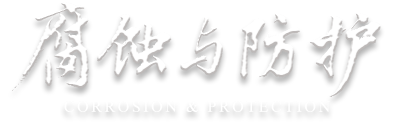周期锈蚀现象与Liesegang图案——两件古代青铜器样品的剖面分析
Periodic Corrosion Phenomenon and Liesegang Pattern—Section Analysis on Two Ancient Bronze Samples
-
摘要: 两种锈蚀产物出现交替分层结构的现象被成为“周期锈蚀现象”,这种现象在考古出土青铜器锈蚀中偶有发现,目前尚没有对此现象的权威理论解释。以中国四川地区出土的两件青铜器出现的“周期锈蚀现象”为例,通过金相显微镜、扫描电子显微镜-能谱仪(SEM-EDS)和拉曼光谱分析等分析手段,发现中国四川城坝遗址出土青铜器CB-1的锈蚀条带为低结晶度的锡腐蚀产物和高结晶度的Cu2O的交替层,这种规律的交替分层可能归因于Cu2O在凝胶介质中的Liesegang结晶循环,这种凝胶介质就是均匀的非晶态的锡腐蚀产物。而四川罗家坝遗址出土青铜器LJB-38的锈蚀条带为锡腐蚀产物SnOx·nH2O与少量Cu2(OH)2CO3与Cu2O的交替层,但未呈现任何规律图案,其原因可能是“去铜化”现象导致铜迅速向外迁移,同时铸造青铜器(α+δ)共析体腐蚀形成的假晶结构破坏了锡腐蚀产物凝胶的均匀性。Abstract: The phenomenon of alternating layered structures of two types of corrosion products is called “periodic corrosion phenomenon”, which has been occasionally found in archaeological excavations of bronze ware corrosion, currently, there is no theoretical explanation for this phenomenon. The “periodic corrosion phenomenon” of two bronze artifacts unearthed in Sichuan, China were taken as an example, metallographic microscopy, SEM-EDS analysis, and Raman spectroscopy analysis techniques were used. It was found that the bands in the CB-1 corrosion of Chengba bronze sample in Sichuan, China were alternating layers of low crystallinity tin corrosion products and high crystallinity cuprite. This pattern of oscillatory bands might be attributed to the Liesegang crystallization cycle of gel rich in cuprite, this gel medium was the uniform amorphous tin corrosion products. The bands in the corrosion of LJB-38 bronze ware in Luojiaba, Sichuan Province were alternating layers of tin corrosion products (including malachite) and cuprite, but did not present any ordered pattern. This might be due to the occurrence of “decupurification” phenomenon, which led to the rapid outward migration of copper and the pseudomorphic structure of (α+δ) eutectoid in casting bronze corrosion destroyed the uniformity of gel fluid.

 下载:
下载: